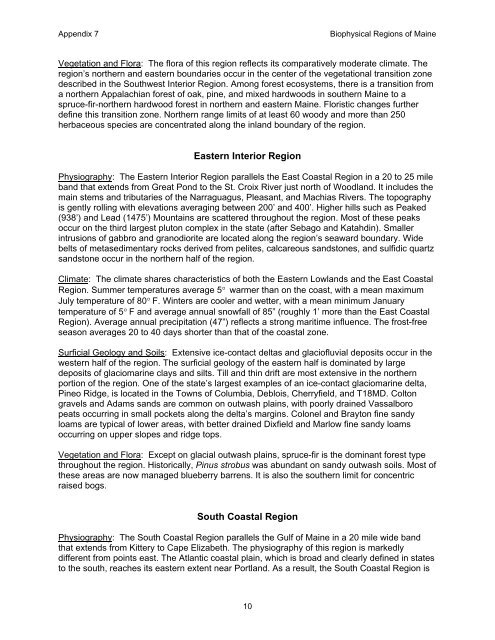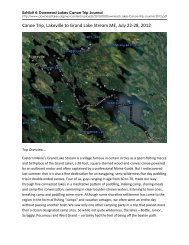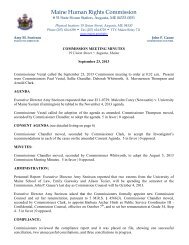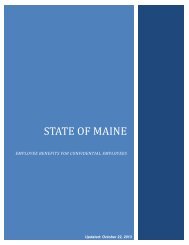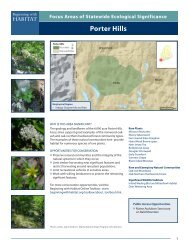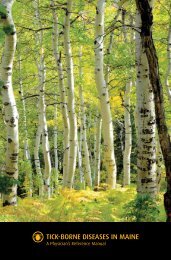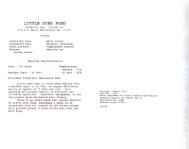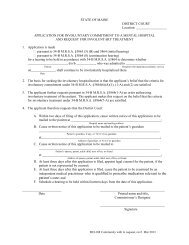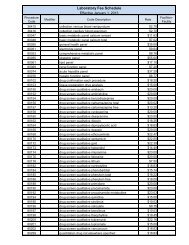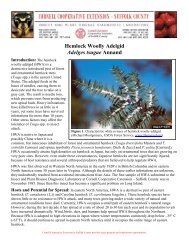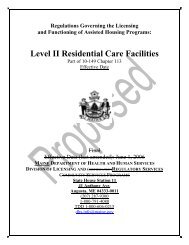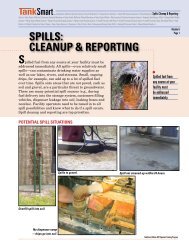BIOPHYSICAL REGIONS - Maine.gov
BIOPHYSICAL REGIONS - Maine.gov
BIOPHYSICAL REGIONS - Maine.gov
Create successful ePaper yourself
Turn your PDF publications into a flip-book with our unique Google optimized e-Paper software.
Appendix 7 Biophysical Regions of <strong>Maine</strong><br />
Vegetation and Flora: The flora of this region reflects its comparatively moderate climate. The<br />
region’s northern and eastern boundaries occur in the center of the vegetational transition zone<br />
described in the Southwest Interior Region. Among forest ecosystems, there is a transition from<br />
a northern Appalachian forest of oak, pine, and mixed hardwoods in southern <strong>Maine</strong> to a<br />
spruce-fir-northern hardwood forest in northern and eastern <strong>Maine</strong>. Floristic changes further<br />
define this transition zone. Northern range limits of at least 60 woody and more than 250<br />
herbaceous species are concentrated along the inland boundary of the region.<br />
Eastern Interior Region<br />
Physiography: The Eastern Interior Region parallels the East Coastal Region in a 20 to 25 mile<br />
band that extends from Great Pond to the St. Croix River just north of Woodland. It includes the<br />
main stems and tributaries of the Narraguagus, Pleasant, and Machias Rivers. The topography<br />
is gently rolling with elevations averaging between 200’ and 400’. Higher hills such as Peaked<br />
(938’) and Lead (1475’) Mountains are scattered throughout the region. Most of these peaks<br />
occur on the third largest pluton complex in the state (after Sebago and Katahdin). Smaller<br />
intrusions of gabbro and granodiorite are located along the region’s seaward boundary. Wide<br />
belts of metasedimentary rocks derived from pelites, calcareous sandstones, and sulfidic quartz<br />
sandstone occur in the northern half of the region.<br />
Climate: The climate shares characteristics of both the Eastern Lowlands and the East Coastal<br />
Region. Summer temperatures average 5° warmer than on the coast, with a mean maximum<br />
July temperature of 80° F. Winters are cooler and wetter, with a mean minimum January<br />
temperature of 5° F and average annual snowfall of 85” (roughly 1’ more than the East Coastal<br />
Region). Average annual precipitation (47”) reflects a strong maritime influence. The frost-free<br />
season averages 20 to 40 days shorter than that of the coastal zone.<br />
Surficial Geology and Soils: Extensive ice-contact deltas and glaciofluvial deposits occur in the<br />
western half of the region. The surficial geology of the eastern half is dominated by large<br />
deposits of glaciomarine clays and silts. Till and thin drift are most extensive in the northern<br />
portion of the region. One of the state’s largest examples of an ice-contact glaciomarine delta,<br />
Pineo Ridge, is located in the Towns of Columbia, Deblois, Cherryfield, and T18MD. Colton<br />
gravels and Adams sands are common on outwash plains, with poorly drained Vassalboro<br />
peats occurring in small pockets along the delta’s margins. Colonel and Brayton fine sandy<br />
loams are typical of lower areas, with better drained Dixfield and Marlow fine sandy loams<br />
occurring on upper slopes and ridge tops.<br />
Vegetation and Flora: Except on glacial outwash plains, spruce-fir is the dominant forest type<br />
throughout the region. Historically, Pinus strobus was abundant on sandy outwash soils. Most of<br />
these areas are now managed blueberry barrens. It is also the southern limit for concentric<br />
raised bogs.<br />
South Coastal Region<br />
Physiography: The South Coastal Region parallels the Gulf of <strong>Maine</strong> in a 20 mile wide band<br />
that extends from Kittery to Cape Elizabeth. The physiography of this region is markedly<br />
different from points east. The Atlantic coastal plain, which is broad and clearly defined in states<br />
to the south, reaches its eastern extent near Portland. As a result, the South Coastal Region is<br />
10


